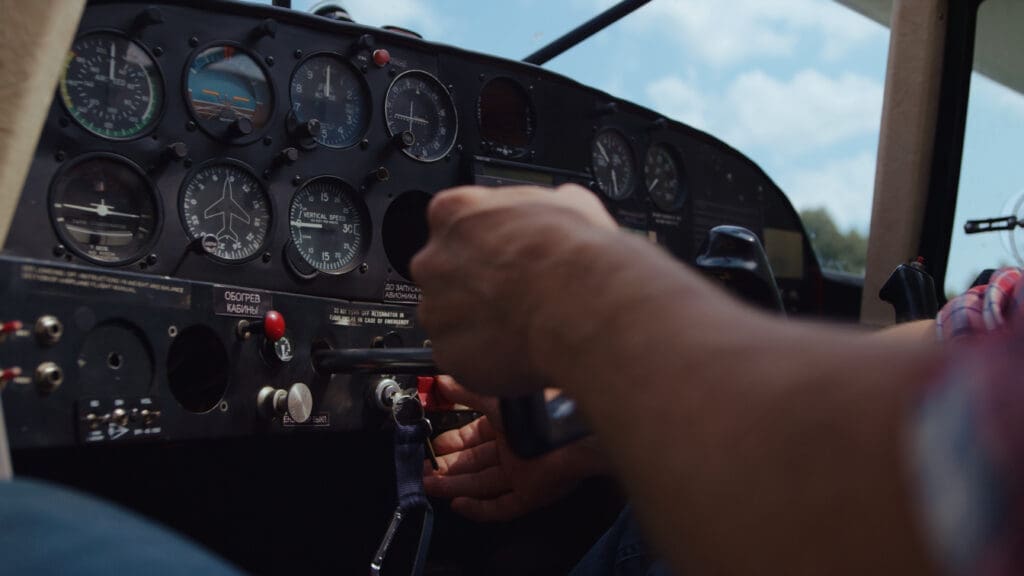Debunking Pilot Shortage Myths
Recently I detailed why the ongoing pilot shortage shouldn’t be blamed on the typical media narratives (Covid, retirements, etc.), but rather an important Government regulation that limits airlines to hiring pilots only who have reached a 1,500 flight hour threshold. You can catch up on that story here, but in writing that article I realized how complicated becoming a pilot can sound to those not familiar with the industry.
While I am not a pilot, I have been aspiring for a long time and have studied the best paths to reaching the airlines. Many friends and colleagues often approach me, intrigued by the idea of flying. They’re usually shocked to find out about the hoops they actually have to jump through. Time, money, and bureaucratic red tape—these are the real commitments you need to make for a career in aviation.
The sad thing is how many, including myself, have stepped away from a potential aviation career because of these barriers, and not planning for them ahead of time. So, I want to change that. At least, as best I can.
Over the next few weeks I will be releasing a series of articles detailing the paths and hurdles people must cross to reach a career as a pilot, starting with this one. You might even consider it a guide to becoming an airline pilot in 2023, and while the focus will be on getting to an airline career, I’ll be sure to mention other aviation possibilities and opportunities along the way. With that being said, let’s get started!
Choosing Your Path: Airplanes vs. Everything Else
Starting off, I’m assuming that you or someone you know wants to be a pilot, or maybe you’re just curious about the ins and outs. Either way, the first thing you will need to understand about becoming a pilot is that, for the most part, it’s all about airplanes. In other words, if you’re eyeing helicopters, blimps, gyrocopters, or hot air balloons, prepare for slim pickings. Why? Because the aviation world revolves around fixed-wing aircraft.
Airplanes are fast, cost-effective, and safe—the triple threat for going from A to B in the sky. Everything else plays a niche role. So, the first choice you will have to make in your flying career is this: Do I fly airplanes, or something else? If you choose airplanes, you will have the most career options and opportunities, helicopters will come a very distant second, and then you can pretty much bunch everything else into a “very limited” category.
The purpose of this article, and upcoming ones, is to guide you along the path to being an airline pilot, which means you will be choosing airplanes. I would highly recommend that, even if flying airplanes isn’t want you want, you should continue to read anyway as there are many career parallels that other aviation categories share with airplanes such as hours requirements and training paths.So, let’s cut to the chase. If you’re pondering a career in aviation but aren’t sold on fixed-wing aircraft, here’s the lowdown you need.

Helicopter Careers
Rotary wing aircraft (helicopters and gyrocopters) are the second largest category behind planes in terms of scale of use and career opportunities. The larger job fields in the civilian market for helicopters range from law enforcement, air ambulance roles, filming, sightseeing, executive transport, flight instruction, and inspection. Interestingly, a lot of helicopter jobs are in the oil and gas industry. This is due to the fact that pipeline inspection, as well as transport to and from oil rigs, can often be accomplished better by helicopter versus other means of transport.
Why The Limitation?
The reason that helicopter careers are so limited is that helicopters themselves are fairly inefficient, slow, and lack flight range. This means that most jobs are very local and don’t fly far, and therefore must utilize the helicopter’s unique ability of landing and taking off vertically in to compete with airplanes. Some of these careers can pay very well (In $100,000 range), however because there are fewer opportunities overall, there will be a lot of competition to get them.
If you’re eyeing a career as a helicopter pilot, the military is your golden ticket. They offer stellar training, ample flight hours, and essential certifications. But if the military life isn’t for you, there’s a civilian route that’s similar to fixed-wing careers. Just know it’s a tougher climb. The job market for rotary-wing aviation is tight, making it hard to accumulate enough flight hours to compete with military-trained pilots. Since all U.S. military branches use helicopters, you’ll be up against a surplus of military pilots transitioning to civilian jobs, leaving non-military folks at a disadvantage.
Niche Aviation Careers
If you are looking to fly something more unique for a living, such as gliders, hot air balloons, or blimps you’re going to have to put inn a lot of effort. Not that the training is necessarily more difficult, it’s that it is a lot more difficult to find. Everything in the aviation industry requires licenses and certifications, and even air balloons are no exception. So finding certified training for say, a blimp, will take a lot of effort, and even relocations. Jobs will be the same way.
Any of these aircraft are mainly used for recreation, sightseeing, and thrills, so most of the work will revolve around that. Your best bet to get into the world of lesser known aircraft is to seek out clubs, groups, or small businesses who operate them. Get to know the owner’s/memebers and see if you can volunteer you time or if they will train you.
Most of the time they will accept because the reason they fly weird things in the first places is because they are as passionate about it as you and want to share that passion. In the meantime, it also wouldn’t hurt to get some experience flying airplanes. While this won’t get you in the aircraft you desire, it will teach you about flying in general and may grant you the experience you need to get your foot in the door elsewhere without being a total beginner.
The Pros and Cons of an Airline Career
Now, getting back to airplanes and becoming and airline pilot. If this is the path you are interested in, then you might want to know what you’re getting into in terms of training a lifestyle. We will of course be getting into all the details in future articles, but the first thing you need to understand is that your career will take some time. To ensure safety, the aviation industry is highly regulted. This means that you will need to be getting a lot of licenses, certifications, and ratings. All of which take time and money. Treat becoming a pilot as the equivalent of going to college. You will be spending up to 2-4 years and upwards of $60,000 to get you to the career you want.
Lifestyle
The lifestyle of being an airline pilot is a lot different than many imagine. You are essentially a trucker in the skies. Being home every night may not be likely. In addition, you’ll probably have to join a union once your reach the majors, and they’re rules will dictate that the people more senior than you will get the cushiest routes. It may also be shocking to learn, meals and lodging are not always paid for. The airlines you may be working for at first may not be the ones you want to fly for either, and it might not pay as much as you’d expect. Beginning regional airline positions are sometimes paying into the hundreds of thousands because of the pilot shortage, but it’s not unheard of to make as low as $40,000 still.
Benefits
So what are the benefits? First, while the pay might be low in the beginning, once you reach the major airlines or are in the regionals for more than 5 years, it is pretty much accepted that you will be making over $100,000. This rate will become even higher the longer you stay and the more certifications you gain. It’s not unreasonable that some pilots late in their career can earn around $300,000 a year.
If you are into travel, then you have a free ticket anywhere you wish to go. Quite literally. Most airlines have agreements that allow you (and your family in most cases) to fly with them for free anywhere in the world simply for working for them. There are restrictions of course, but if you plan ahead you will never have to pay for an plane ticket ever again. Finally, there’s the simple joy of being a pilot.
This won’t come intrinsically to everyone, but if you’re reading this article more than likely you feel some connection to flying. And I can tell you that most pilots I’ve talked to, professional and amateur, love it. It’s just something in their blood, and even though they’ve done it a thousand times, they still love it. No guarantees you will too, but it’s pretty special being in the sky.
Taking Off
Take everything I’ve presented so far and mull it over, just know this is a very basic overview. The hard details are going to come next time when we begin the first actual steps to becoming an aviator: getting your licenses. In the meantime, explore around the world of aviation. Watch videos, play simulators, read books. There’s a treasure trove of knowledge out there besides this article that can better inform you of what you want out of aviation. In the meantime, there will be more to come.







































